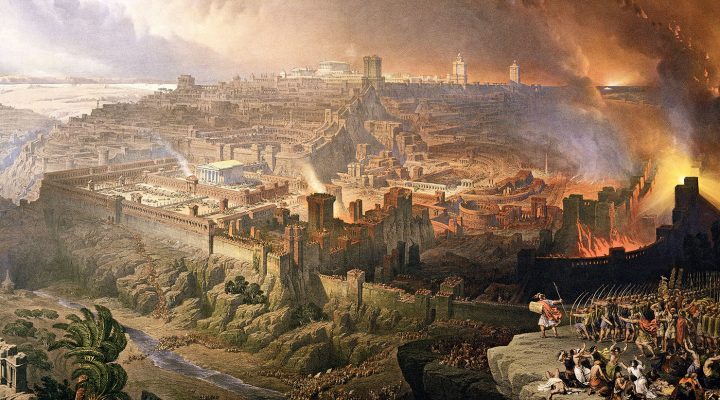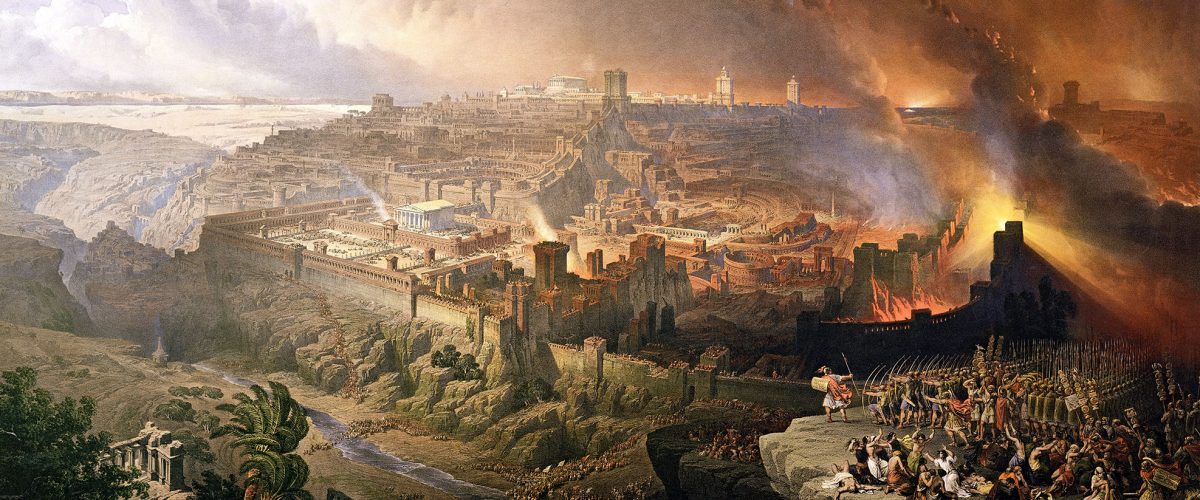On May 30, 1921, the worst expression of racial hatred in American history took place in Tulsa, Okla. My son-in-law, Norman Lee, is a public artist. He recently was commissioned to create an enormous mural in a Tulsa underpass highlighting the glory days of Tulsa’s Greenwood district. White people called it “Little Africa,” but more perceptive observers called it “Black Wall Street.”
Greenwood prospered because Black residents couldn’t shop in white stores, conduct business in white banks or even buy insurance from white agencies. This created a demand for Black-run businesses catering to an all-Black clientele. As the population of Tulsa exploded after the oil business took off in 1905, the Black residents of Greenwood were all gainfully employed, and a growing list of Black entrepreneurs were buying expensive automobiles and building impressive homes.

Alan Bean
On May 30, 1921, a young Black man was accused of assaulting a young white woman in an elevator. The suspect was arrested and escorted to the courthouse. Realizing the young man was vulnerable to a lynch mob, several dozen Black veterans marched to the courthouse with their army-issued rifles slung over their shoulders. Informed that their services wouldn’t be needed, the men returned to their homes.
But when a howling mob of white residents gathered around the building, the Black men returned. A member of the white mob tried to snatch a rifle from the hands of a Black man. A shot rang out. In an instant, everyone was shooting wildly. When the smoke cleared, 10 white men lay dead.
What happened next defies description. White men rampaged through Greenwood shooting Black men, women and tiny children on sight. Virtually every home, business and church in the district was burned to the ground. It is estimated that 300 residents of Greenwood were murdered, their bodies dumped into mass graves. Fifty white residents also died.
“A century has passed since the Tulsa Race Massacre, but the horror abides.”
I was in Tulsa in late February, looking for photographs from Greenwood’s glory days and interviewing men and women with ancestral roots in Greenwood. The residual trauma was palpable. A century has passed since the Tulsa Race Massacre, but the horror abides.
One evening, I was sitting at my computer, sorting through the photographs I had collected during the day. The horror that descended on Black Wall Street in 1921 and the destruction of Jerusalem in 587 BCE became fused in my mind.
Catastrophic theology
The Bible can be understood as a narrative response to catastrophe. The God of Scripture emerges from the ashes of Jerusalem. The text of holy Scripture was composed, collected and revised during a catastrophic period stretching from 722 BCE, when the Assyrians scattered the “northern kingdom” of Israel to the four winds, and 70 CE, when the armies of Rome slaughtered a million people and ground the second temple to dust.
Biblical scholars have long surmised that the final draft of Israel’s written history took shape in the centuries following the Babylonian exile (597-539 BCE). But only in recent years has the relationship between collective trauma and theological revolution received careful attention.
Fortunately, our understanding of collective trauma has grown substantially over the last few decades. Survivors of the Shoah, American Jim Crow racism and Western imperialism and patriarchy are impacting the once-insular world of biblical scholarship. Collective trauma can destroy the shared identity of a group or nation. The solid pillars of truth and meaning give way. Only dust and ruin remain.
But the human spirit is resilient. Gradually, new shoots of hope press up through the rubble.
Gods and kings in the ancient world
Have you ever noticed that the biblical books of Samuel and Kings tell us a whole lot about kings and very little about anyone else? In the ancient world, a king who honored his gods was rewarded. On the flip side, it was commonly believed that kings who suffered tragedy, loss and trauma must have dishonored their gods in some fashion.
If the king was blessed, everyone benefited; if the king was punished by his gods, everybody suffered. Which is why the history of Israel is laser focused on the merits and liabilities of individual kings.
What happens when a king dies together with his entire household? What happens when the temple the king built for his god is ripped apart stone by stone? What happens when the dominant caste of society is humiliated, murdered, raped and impoverished? What happens when the survivors of this calamity are exiled to a foreign land with hundreds more dying along the way?
The natural assumption is that the invaders’ god is more powerful than your god. The smart move is to transfer your allegiance to the winner god and hope for better days. Yahweh had been bested by Marduk and the rest of the Babylonian pantheon. Judean exiles were tempted to lose their religion. Many did.
A bigger God
But then things began to change. Fast. In 539 BCE, the great city of Babylon surrendered to the armies of Persia. The Persian king Cyrus allowed exiles to return to their lands of origin. It was an offer most Judeans could refuse. Most had no living memory of Jerusalem. They had no desire to return to an impoverished land and a ruined temple.
“By destroying the old theology of king and temple, the Babylonian captivity laid a foundation of hope.”
But a hardy few seized this new opportunity with joy. They were pilgrims aflame with hope and new ideas. By destroying the old theology of king and temple, the Babylonian captivity laid a foundation of hope.
Maybe, people thought, Babylon was simply an instrument in the hands of Yahweh. Marduk wasn’t all that powerful after all. What if he was just a figment of the Babylonian imagination? What if all gods but Yahweh were mere fictions? What if Yahweh alone had created the heavens and the earth? What if their God was too small?
Building on a foundation of hope
After rebuilding the city walls of Jerusalem and erecting a new temple to Yahweh, the sages of Judah began cobbling hundreds of ancient story fragments into a connected narrative. Most of these stories carried scriptural authority, but they could be supplemented with commentary. They could be arranged in chronological sequence. People needed to know that Yahweh had been at work from the first day of creation, conforming a covenant people into the divine image.
Like the people of Judah, Adam and Eve were cast out of paradise. Like the returning exiles, Abram and Sarai set out from Ur of the Chaldees (Babylon) with no idea what lay in store. And the God of the patriarchs was the creator of all that is. Abraham and Sarah receive new names. They are blessed to be instruments of redemption in a broken world.
Above all, the people of Judah needed to understand that their collective trauma was a necessary part of God’s redemptive plan. In the fourth chapter of Deuteronomy, Moses spells it out:
The Lord will scatter you among the peoples; only a few of you will be left among the nations where the Lord will lead you. There you will serve gods made by human hands, objects of wood and stone that neither see, nor hear, nor eat, nor smell. (Deuteronomy 4:27,28)
“People needed to know that Yahweh had been at work from the first day of creation, conforming a covenant people into the divine image.”
Initially, Moses predicted, the exiles would abandon Yahweh for more impressive deities. But when their idolatrous game was exposed, a true and redeemed Israel would rise from the ashes:
From there you will seek the Lord your God, and you will find him if you search after him with all your heart and soul. In your distress, when all these things have happened to you in time to come, you will return to the Lord your God and heed him. (Deuteronomy 4:29,30)
When the temple was rebuilt, it no longer functioned as an extension of a king’s palace. The new temple may have been a sorry replica of Solomon’s original, but Solomon built many temples to many gods. Kings like Manasseh had set up idols to Baal and Asherah in Solomon’s temple. Those days were gone. The rebuilt temple was the only place in all creation where earth and heaven intermingled.
We need a bigger God
Like pre-exilic Israel, we are an idolatrous people. We worship a pantheon of false gods too numerous to tabulate. We have come to realize that our idolatrous ways threaten our very survival, but we can’t imagine life without them. Like the people of ancient Israel, we tip our hats to Yahweh. But their problem is our problem. We have reduced God to manageable size, but only a big God can save us.
Our corner of the sky, known colloquially as the Milky Way galaxy, has 100 billion stars and a diameter of 100,000 light years. The universe contains somewhere between two hundred billion and two trillion galaxies.
According to Genesis and the Apostles’ Creed, we worship the maker of the heaven and earth. But what kind of deity could hold unimaginable vastness in the palm of her hand? Either there is no God at all, or we are dealing with a deity beyond our wildest imaginings.
Judah’s idolatrous worldview had to collapse before fresh visions of hope could emerge like grass through concrete. But as one wave of trauma gave way to the next, the architects of holy Scripture were forced to adapt their vision of God to new circumstances. They didn’t always agree.
We look to our Bibles for a settled orthodoxy; what we get is a vigorous debate. I’ll have more to say about that next time.
Alan Bean serves as executive director of Friends of Justice. He is a member of Broadway Baptist Church in Fort Worth, Texas.


